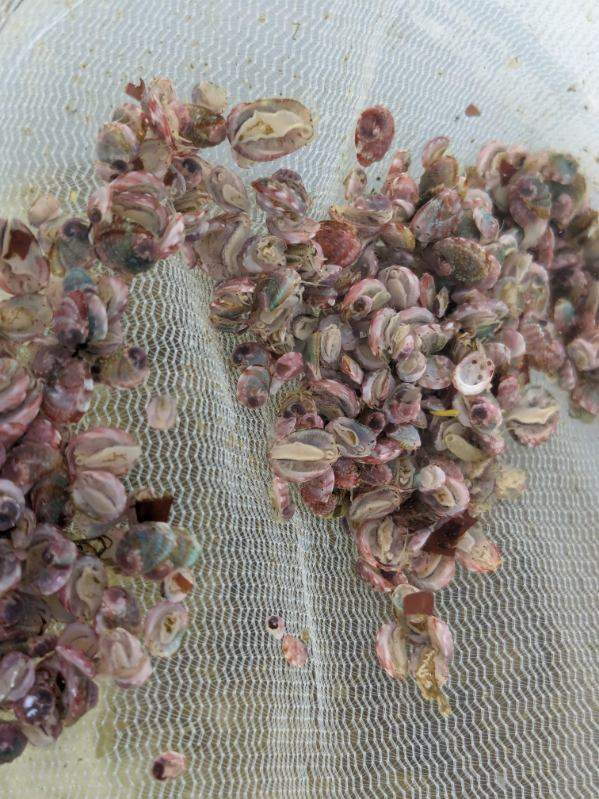Exploring Case Studies of Conservation Aquaculture

Ocean resources are essential to many communities, supporting food production, economic growth, and livelihoods. Resource extraction is often counterproductive to conservation goals, especially at the industry level. Is there a possibility to adapt the conflicting needs of society and the environment to promote conservation goals? Sustainable resource management is ever important in the face of climate change, and expanding human development.
Increasing demand and decreasing natural system productivity for seafood and other ocean resources has led to rapid development in the aquaculture industry, with operation scales ranging from small local consumption to industry export-level operations. Aquaculture can be single species focused on polyculture and range from food security to restorative. Utilizing aquaculture as a management strategy to restore ecosystem services is an interesting branch of this growing industry that aims to balance ecological, economic, and social marine resource needs.
Aquaculture encompasses different types of operations for various species; commercial aquaculture for food and resource production, restorative aquaculture to benefit ecosystem services, and conservation aquaculture. Conservation aquaculture is defined as an aquaculture method that directly supports the recovery goals of native species. Conservation aquaculture can operate with or without simultaneous commercial aquaculture, as long as existing protocols meet conservation goals. These goals include the recovery of wild native populations, with sustained habitat, and promoting genetic variation to support wild populations. The connection between aquaculture and conservation is a new concept only recently coming into the industry spotlight. Adapting existing aquaculture projects to align with conservation goals could be an intervention method to mitigate habitat loss and species decline. In what follows, I present examples of conservation aquaculture projects that seek to increase species abundance levels through different means.

Corals and oyster reefs provide many ecological, economic, and social benefits, these reef-engineering species are vulnerable to climate change and are already seeing a dramatic global decline. Aquaculture-based management strategies for coral and oysters are potential avenues for the restoration and conservation of ecological important reef habitats.
The numerous ecosystem services provided by coral reefs make them one of the most crucial marine habitats in the world. These diverse organisms construct essential habitats, protect shorelines, and support coastal communities. Human actions have led to a significant coral decline, which has been documented for decades and ignited a drive to restore coral to historical levels and prevent future losses.
Aquaculture projects that look to captive-breed corals that can facilitate the re-establishment of reef habitats are another conservation method being increasingly explored. Coral transplantation success is also dependent on environmental stressors being reduced at transplantation sites, recruitment and coral recovery are limited by a lack of stressor reduction. This poses another challenge to efforts to repopulate degraded coral communities. Proposed techniques for rearing sexually derived coral propagules have been suggested to be a restoration method for broadcast spawning corals. Restoring coral to historical levels may not be enough for these organisms to adapt to future climate conditions, resilient coral species aquaculture may be a tool for adaptive habitat restoration. Ecosystem restoration faces complex challenges with mitigating degradation and safeguarding against future threats to allow ecosystems to thrive, designing adaptive restoration plans to prevent continued habitat degradation could be a useful tool in our changing systems.
Oysters function as reef-engineers providing complex substrates to other species for spawning, spawning, food, and shelter. Oyster reefs have declined dramatically in the last two centuries. Commercial oyster aquaculture has a long history of including ecosystem-minded conservation goals in their practices, making them valuable assets in the restoration of oyster reefs.

Conservation aquaculture has been implemented in management strategies to aid in recovering endangered species populations. The Kootenai River white sturgeon (Acipenser transmontanus) was listed as an endangered species in 1994 after experiencing recruitment failure for three decades. A captive breeding strategy was implemented to maintain the population’s genetic pool, occurring in conjunction with restoring habitats to support wild recruitment.
These successful programs work with declined species where low recruitment is a factor limiting population growth, the projects are planned with the broader ecosystem in mind to create a holistic approach to promote long-term population stability. Hatchery rearing of species to replenish declined populations is a common method for conservation aquaculture, in the case of white sturgeon, hatchery-bred juveniles were used to supplement wild populations. The ecosystem-management efforts occurring along with the conservation of aquaculture are attributed to the success of this program.
The captive program breeding project, the White Abalone Recovery Program, is a collaborative program in California to recover depleted populations of white abalone in Southern California. This program spawns white abalone in captivity, raising larval abalone till 25mm where they are then introduced to predetermined sites where monitoring for increases in wild populations occurs. Since 2019 10,000 hatchery-bred abalone have been placed onto subtidal reefs in Southern California.
In 2003 a collaborative project was launched in Washington State to restore declined pinto abalone populations, this project aimed to establish a conservation aquaculture program to produce genetically diverse pinot abalone juveniles to assist in wild population recovery. Outplanting of juveniles around Puget Sound has been occurring since 2009 and ongoing research is being conducted to improve hatchery outplantings.
“There is a lot of promise in this arena and future research will only enhance what conservation aquaculture can achieve.”
These many projects are just some examples of how aquaculture is currently being used for conservation. There is a lot of promise in this arena and future research will only enhance what conservation aquaculture can achieve. Adapting aquaculture to promote species conservation is an interesting strategy to consider, with expanding interest in aquaculture for resource production, can we adapt these programs to assist in ecosystem and species restoration.